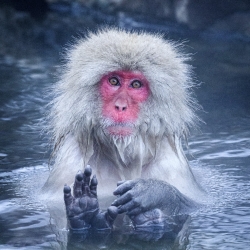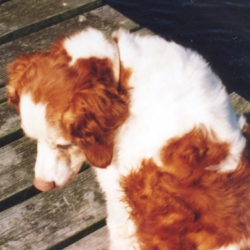Home > Topics > Post Processing > General > noise reduction
noise reduction
-
AuthorTopic: noise reduction Read 925 Times
-
Generalon: January 31, 2021 at 12:47 pm
What’s good? I’m interested in views on LR, Dfine, Topaz DeNoise and anything else people find useful.
Jeremy
Re: noise reductionReply #1 on: January 31, 2021 at 1:33 pmJeremy, I am a big fan and user of Topaz. It’s been extremely good and a new version is now out. check this out. https://photopxl.com/download/penguins-full-size-topaz-denoise-ai/
Kevin Raber
Owner and Publisher of photoPXLRe: noise reductionReply #2 on: February 2, 2021 at 1:58 pmLR (or a raw processor which does a good job and LR does) is ideal for removal while rendering raw.
Optimal exposing to reduce noise when possible, even better (GIGO:Garbage In Garbage Out).
Author “Color Management for Photographers" & "Photoshop CC Color Management" (pluralsight.com)”
Re: noise reductionReply #3 on: February 2, 2021 at 6:00 pmI agree with Andrew. In the current version of Lightroom, the noise reduction tools are quite powerful and flexible (but hence not automatic, as they are in some plug-ins). I don’t use NR much, but when I do, that’s what I use.
Re optimal exposure: assuming you have a narrow enough dynamic range that you have a choice of exposure–that is, choices that won’t clip at either end–exposure makes a larger difference as ISO goes up. I did a test several years ago, using a Canon 7D (original), which gets noisy pretty quickly as you increase ISO. I shot a series of photos at ISO 3200, which is high enough on that camera to produce quite a bit of noise in many circumstances. I first exposed to the right, and then I dropped exposure by one stop at a time, offsetting that decrease by brightening in post. The difference was larger than I expected. None of these images had any NR. Here’s ETTR:

And here is 3 stops lower:

And four stops lower:

-
This reply was modified 3 years, 5 months ago by
Daniel Koretz.
Re: noise reductionReply #4 on: February 3, 2021 at 10:25 amI found this tutorial to be helpful for noise
reduction in LR: https://www.youtube.com/watch?v=yy4uujCeFxoRegards,
DaleRe: noise reductionReply #5 on: February 3, 2021 at 4:04 pmDale, that’s an interesting tutorial.
Andrew, you’re obviously right. Sometimes, though, it’s just not possible. The shot which provoked my query was the one I posted on this site here. It would have been better with a longer, tripod-based exposure but it was a grab shot as we were walking.
Jeremy
-
This reply was modified 3 years, 5 months ago by
 Jeremy Roussak.
Jeremy Roussak.
Re: noise reductionReply #6 on: February 14, 2021 at 8:07 pmI prefer DxO PhotoLab 4 (Deep Prime) noise reduction if the camera is supported. The best is to use it as the first step, which converts the raw file to a linear DNG file. If the camera is not supported, then I use Topaz DeNoise AI.
Re: noise reductionReply #7 on: February 15, 2021 at 1:14 pmThe shot which provoked my query was the one I posted on this site here
Sorry, didn’t get notification this is on going.
As for ISO, ISO doesn’t increase noise in many, many cameras. Exposure or insufficient exposure does as outlined. Setting ISO speed does not change the sensitivity of the sensor to light, like volume control does not change the sensitivity of a radio. In both cases the setting (ISO or volume) controls only the signal processing, while the input stage (sensor, antenna) provides the same input signal. That’s why when ISO setting is cranked up, automatic exposure results in more noise – automatic exposure in this case decreases the exposure (that is, the combination of aperture and shutter speed is set to allow less light captured by the sensor). But it is still important to understand that less exposure, less light, more noise.
In my camera (not all follow suite), the amplification decreases the level of noise, from amplifier to AtoD converter. The stronger the signal after the amplification, the lower is the relative level of noise. Achieving so called “ETTR” through ISO only makes sense when exposure is inadequate. This can occur in many shooting conditions like low light conditions, large DOF requirement, quick action, etc. And that’s what I believe you are telling us with that example on the other forum page.
Achieving ETTR through ISO only makes sense when exposure doesn’t suffice to make it which is what you have described. In the real world this happens hundreds of times (low light conditions, large DOF requirement, quick action,…).
Author “Color Management for Photographers" & "Photoshop CC Color Management" (pluralsight.com)”
-
This reply was modified 3 years, 5 months ago by
-
AuthorPosts
- You must be logged in to reply to this topic.




